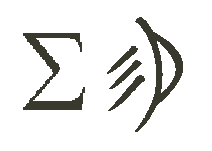

The I Ching (pronounced EE CHING) is the ancient Chinese "Book of Changes". It is a book of natural philosophy and wisdom created in the mysterious past of ancient China. It contains wisdom which predates most other texts by many centuries. The I Ching has been consulted for centuries by people seeking answers to questions concerning how to look to their future. It is somewhat surprising to what extent it is still consulted in our modern times.
In order to consult the I Ching, the seeker of knowledge performs a ritual by tossing coins or drawing stalks of yarrow to select the specific answer to his or her question . These rituals are called the oracles of the I Ching. This document contains an analysis of the combinatoric mathematics of the oracles. I have used the combinatoric analysis to uncover some interesting information about the probability of obtaining specific answers from the book. There were some surprising results which came out of my analysis, particularly in the differences between the coin and the stalk oracles.
I also have included some speculation about why the book may be more relevant than a simple parlor game. Perhaps these other features of the book can account for its longevity.